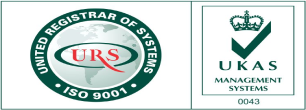
QFORM CROSS – WEDGE ROLLING
Digital Design Solutions is a Premier Provider of QForm Cross-wedge and Ring Rolling Forging Simulation Analysis & Optimization Software Solution and Services across India.
Cross-wedge rolling is an economical and effective way to produce preforms with variations in cross section diameters. The process rolls the workpiece between rotating dies to create various diameters across the length of the workpiece.
Difficulties faced:
- Very difficult and intensive process to design.
- Production of these tools is expensive.
QForm Software significantly reduces the time and cost for designing and realization of this technological process with accuracy.
QForm allows simulation of the entire process chain including cross-wedge rolling as preforming operation and subsequent forging operations.
Advantages
-
Reduced technology development cost by testing on your computer without needing to produce test equipment or perform trials on a rolling machine
-
Optimization of the entire forging technology chain including cross-wedge rolling process optimization by means of simulation in QForm
-
Prediction of forged part properties after cross-wedge rolling operation, i.e. by analyzing temperature, effective strain field and macro structure of forged part
-
Determination of optimal work piece shape
-
Creating a virtual prototype for discussion with the customer offers a better understanding of the real process. Production staff can see inside the process that allows for better cooperation between engineers and technologists
Special QForm features that help simulate cross-wedge rolling
-
Special algorithms are applied to achieve high accuracy of formation prediction in processes where the work piece is rotating during the process.
-
Automatic inheriting of cross-wedge rolling simulation results to subsequent forging operations.
-
Grain flow and macro structure simulation.
QFORM RING ROLLING
QForm Ring Rolling is a simulation solution developed for wheel and ring rolling processes. The program is adapted to use data from modern rolling mill algorithms that significantly simplify the input of initial data required for simulation. Special calculation methods allow for quick and accurate prediction of ring deformation with rectangular or shaped cross sections.
Difficulties faced:
-
Small deformation zone
-
Continuous displacement of deformation zone
-
Undeformed material must retail shape, temperature and stress
-
Fine mesh mesh requirement in traditional simulation software thus increasing simulation time
-
Complex and different kinds of kinematics of Modern machines
The software has a direct interface with SMS and Siempelkamp rolling machines and has special algorithms to simulate rolling processes on machine from these companies. Of machines from other manufacturers can be also implemented to the software, for example Weingarten ring rolling machines.
In Qform full technological chain for ring rolling simulation includes all of the steps can be simulated. Ring rolling can be started from a 2D simulation of upsetting and go through further technological operations like forging and piercing and then finally to the ring rolling simulation.
The following special features are implemented in QForm Ring Rolling software:
- Data preparation interface are realized directly from control programs of SMS Meer, Siempelkamp, Muraro and Mitsubishi rolling machines (mills)
- Tools movement graphs are taken directly from SMS Meer and Siempelkamp rolling machines;
- In QForm Ring Rolling software is possible to import function graphs of source data, which simplifies the task of the user input of the simulation data and eliminates the human error factor;
- The special dual mesh algorithm which was created by our developers, is implemented in QForm Ring Rolling software. One mesh with very high adaptation in contact area accurately describe interaction zone while the other mesh inherits the changing ring shape and calculating fields with very high accuracy.
The mesh of the tools are very fine only in the areas in contact with the workpiece and these zones are fixed relative to symmetrical axes. These highly developed algorithms in QForm Ring Rolling allow for quick and accurate simulation of rolling processes. QForm Ring Rolling uses the same input parameters that are used for programming a rolling mill so it is easier to set up simulations. QForm Ring Rolling program algorithms are set up for simulation of rolling on double-stand mills but can also be adapted to simulate other types of processes such as closed ring rolling.


